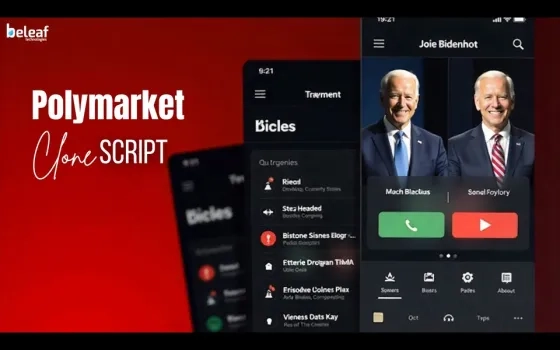Summary
Process field devices are critical parts of automation systems. They provide measurements and actuations that control and optimize a production process. However, the networking technology employed by process field devices (transmitters, control valves, etc.) has not changed substantially for over 30 years. Indeed, the transmitters and valves in process plants have entirely missed the networking revolution that brought the Internet to our desktops and our pockets.
Happily, this situation is finally about to change.
During this decade, process manufacturing plants should expect that their existing field device networks can be replaced with new technology that will use their existing field wiring (a critical requirement for widespread adoption, as wholesale replacement of process field wiring is simply infeasible).
In today’s installed base of process field devices, most devices communicate using the HART protocol that dates from the 1980s. In the 1990s, the fieldbus standardization efforts produced not one, but a handful of standardized technologies. Two applied to process field devices: PROFIBUS PA and FOUNDATION Fieldbus. Despite three decades of availability and promotion, neither technology has gained a major share of the field device installed base, even though certain process manufacturers use them extensively.
With the pending availability of true networking technology, process manufacturers now need to prepare their long-lived field devices for what will eventually become a revolutionary change in technology. First, let’s examine the new technology that will become available shortly, and then discuss how process plants should prepare existing field devices and networks so that they can easily take advantage of it.
The Promise of Ethernet-APL
There are three primary reasons why IEEE 802.3 (Ethernet) networks have not been used for field communication in the process industries. The first is that most Ethernet physical layers limit cable lengths to 100 meters, maximum. An absolute limit of 100 meters excludes many process field device installations. So these standards have generally been infeasible for process plants. A second and equally important reason is that Ethernet physical layers are not suitable for the hazardous environments encountered in many process plants, especially in hydrocarbon processing industries. Third, field devices are powered by 24-volt DC power carried over the single pair of conductors in their cable. Thus, process field devices have continued to use decades-old fieldbus network technologies rather than Ethernet.
In some vertical industries (notably food & beverage and pharmaceutical) the 100-meter limit of Ethernet networks is not an issue. These plants also do not usually have hazardous environments. For these applications, field device suppliers have equipped some process field devices with Ethernet interfaces – generally with embedded support for one of the major industrial Ethernet protocols. Given the limited applicability of such Ethernet field devices, the uptake by the process industries has been very rapid. Indeed, ARC Advisory Group believes the shipment volumes of these Ethernet field devices now exceed all the traditional process fieldbus technologies except for HART.
For the past two years, a group within the IEEE 802.3 task force has been working to define a new physical layer specification for two-wire Ethernet. This new specification will allow extended range. The new IEEE specification is IEEE 802.3cg and this physical layer will include a 1,000-meter long, two-wire physical layer with 24-volt device power that uses the same reference cable specification (IEC 61158-2) as HART, PROFIBUS PA, and FOUNDATION Fieldbus. This IEEE specification addresses the requirement to use existing cable, the required long cable run lengths in the process industries, and the need to power field devices. However, the IEEE standard does not address the requirement to operate in hazardous environments. This issue is being tackled by a process industry consortium called Ethernet-APL (where APL stands for Advanced Physical Layer).
The Ethernet-APL project is supported by many major process industry suppliers including ABB, Endress+Hauser, Krohne, Pepperl+Fuchs, Phoenix Contact, Rockwell Automation, Samson, Siemens, R. Stahl, Vega, and Yokogawa. The APL project is also cooperating with industrial communication standards organizations, specifically PROFIBUS & PROFINET International (PI), ODVA, OPC Foundation, and FieldComm Group.
The Ethernet-APL project will develop field Ethernet switches that can be installed in hazardous environments and will enable direct connection of field devices to Ethernet-based networks. The Ethernet-APL project is working toward a goal of having certified products available to demonstrate at the 2021 ACHEMA event in Germany, with commercial availability of Ethernet-APL devices expected to begin late in 2021. Roughly one year from today, the process industries and process field devices will reach a much higher degree of IT/OT convergence. Process field devices can then become part of a fully networked automation system – a system that includes the Internet protocols.
Preparing for APL by Using a Proxy
Process manufacturing end users need to get their existing plants into a configuration that enables the gradual and non-disruptive adoption of Ethernet-APL. To do this, they should employ proxy devices to integrate their existing fieldbus networks.
What is the difference between a proxy device and a gateway? Both types of devices have essentially the same function, which is to move process data across two different protocols. Gateways are designed to do this but, in general, they do not expose all the data available in one protocol. For instance, they may not provide diagnostic data, alarm data, or network status information. Furthermore, the rule for mapping of data in a gateway is often vendor-specific.
A proxy device on the other hand, while performing essentially the same role as a gateway, uses a standardized data mapping that includes alarm information, network topology and health information, and device diagnostic information. This information is available because a proxy device uses this standardized data mapping (in the case of PROFINET one that has been predefined by PI). Using this standard data mapping, the proxy device can make this additional and rich information available without extensive engineering effort.
To illustrate the gradual migration to Ethernet-APL, we will use as an example a plant that uses PROFINET as its primary industrial Ethernet protocol. Depending on the age of installation, some process plants use PROFIBUS DP instead of PROFINET as a primary network protocol. The proxy device
can service dozens of (PROFIBUS PA) field devices and provide options for redundant communication. Similar devices can be configured for any other fieldbus protocols implemented in the plant (see figure).
As Ethernet-APL compliant equipment and devices become available the devices connected via the proxy can be replaced incrementally with new APL devices that connect directly to the PROFINET network via an Ethernet-APL-compliant field switch. This enables the migration to proceed gradually and with minimal disruption to production. The legacy PROFINET PA and new APL devices operate in parallel. The transition to a full set of Ethernet-APL-compliant devices can thus be made gradually and with protection of the investment in existing devices and technologies. The transition is shown graphically in the figure.
Conclusion
After so many years of status quo, it may be difficult for many to believe that modern network technology can finally be brought to bear on process field devices. However, the time of this revolutionary change is now approaching and manufacturers and other industrial organizations should prepare for this fundamental change.
About the Author:
Harry Forbes
Harry is ARC’s lead analyst for the Distributed Control System (DCS) market. In addition, ARC leverages Harry’s utility expertise in its coverage of Smart Grid, industrial networking, networking and communication standards, and the electric power vertical industry. His research topics include the DCS integration and architecture, Smart Grid, Smart Metering, energy storage, industrial wireless, industrial Ethernet and emerging network technologies.
























